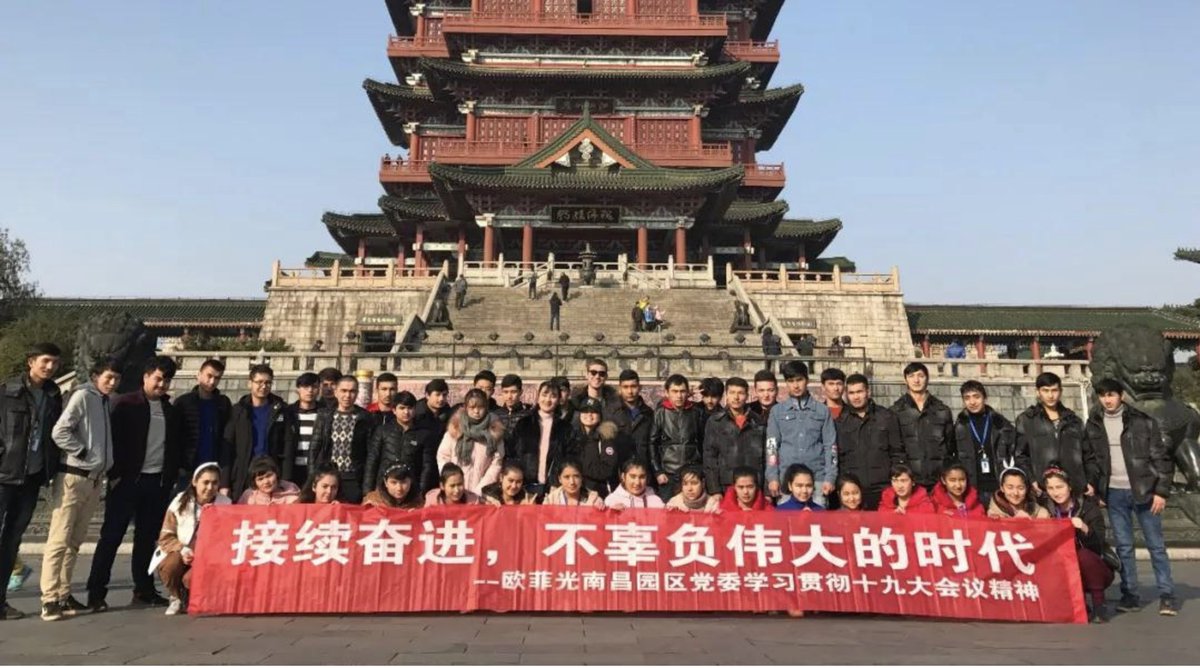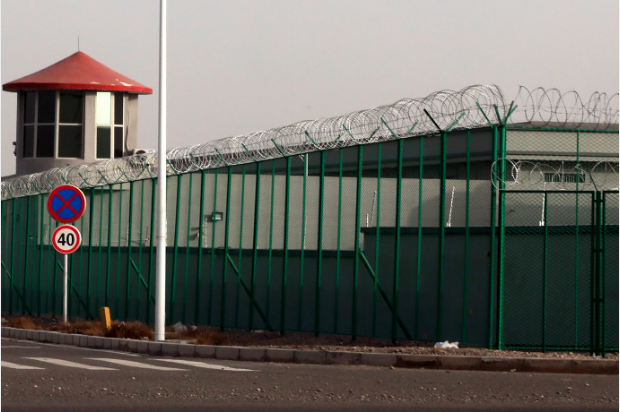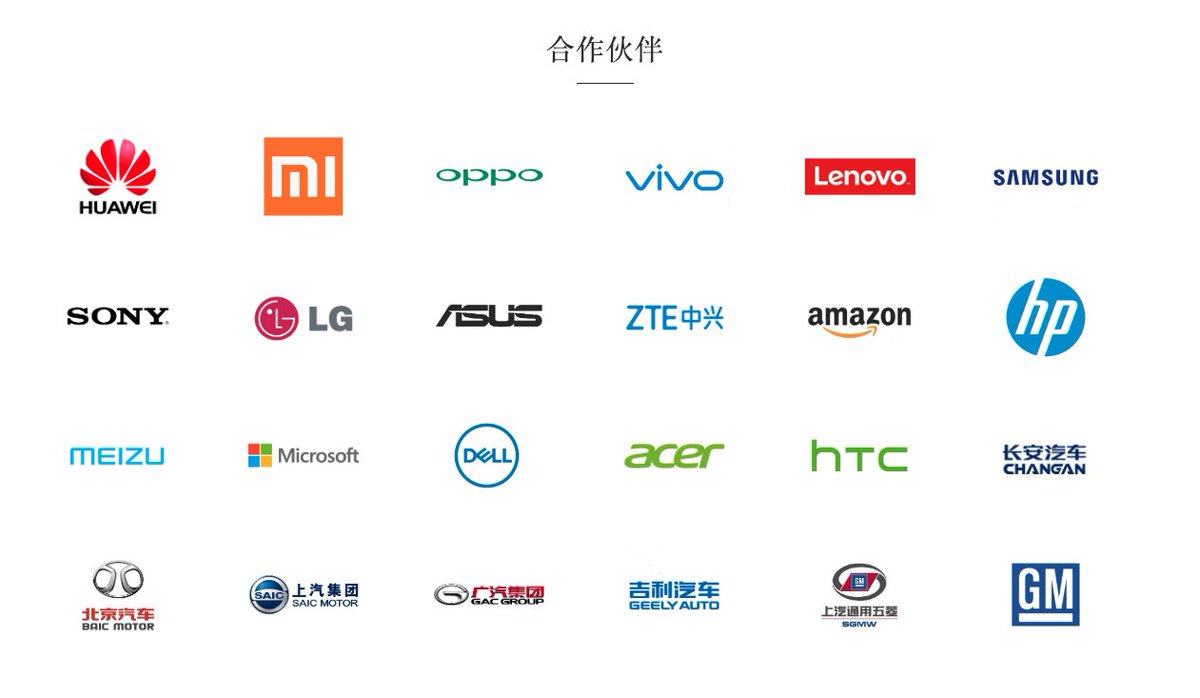
1/ For over a year, @yananw & I chased this story about China's labor transfer program, under which hundreds of Uighurs working at a tech plant are barred from leaving their compound without minders. Their company supplies Apple, Lenovo, other tech giants:
apnews.com/3f9a92b8dfd3ca…
apnews.com/3f9a92b8dfd3ca…
2/ It was one of the hardest stories I've ever done because of its nuances and complexities, as well as increasingly-routine police harassment. We couldn't speak directly to the Uighur workers, because they weren't allowed out. Nonetheless, we made some interesting discoveries:
3/ The factory employs many Hui, another largely Muslim minority. They told us that the Uighurs are treated differently. They're not allowed out, they can't worship or wear headscarves, and they have to take politics classes in the evening. (They are, however, paid equal wages)
4/ They're there under a labor transfer program aimed at assimilating them. During an Islamic festival, Uighur employees watched a show with Communist officials called “Love the Motherland – Thank the Party.” OFILM said a “Uighur beauty” dazzled with her “beautiful exotic style.” 





5/ They attend classes to "comprehensively raise their quality". A banner in their classroom says they are being "cultivated" in the ways of the Party. OFILM says they participate in Mandarin speech competitions. 





6/ On holidays, they don't go back home. Instead, state-appointed teachers lead them on tours of Chinese historic sites and Communist war memorials. 



7/ The program started in the early 2000s. It targeted young, single women, because the state worried that Uighur women raised in pious Muslim families didn’t work, had children early and refused to marry Han men. This 2006 paper blames it on "traditional customs" of minorities. 

8/ At first, many went willingly, enticed by high salaries and state benefits. But horror stories began trickling back - of harsh and restrictive conditions, abuse, poor pay. People began refusing to go.
That's when the state began resorting to force.
That's when the state began resorting to force.
9/ Police raid Uighur villages for young women. Abdurehim Imim's father was one of the victims, jailed for 40 days for sending Imim's sister to live with relatives. Imim's cousin Fatima went instead. When she returned, Imim said, she was bitter, alienated, & "totally different". 

10/ The program infuriated Uighurs - one of a long list of complaints. In 2009, things exploded when two Uighurs were killed in a factory brawl with Han Chinese. Gory images, including one of a Han man dragging a dead Uighur by his hair, circulated online.
11/ On July 5, Uighur students gathered in Xinjiang's capital for a peaceful protest demanding a state investigation. Some waved Chinese flags, saying they deserved the same rights as other citizens. Tensions built - until police opened fire.
apnews.com/1e095c203d4a40…
apnews.com/1e095c203d4a40…
12/ Enraged mobs of Uighur men tore through Urumqi, stabbing Han civilians, burning cars, throwing rocks at police. Some 200 people died in the bloodbath.
In China, July 5 is a date that went down in infamy. It destroyed Han-Uighur relations and changed Xinjiang forever.
In China, July 5 is a date that went down in infamy. It destroyed Han-Uighur relations and changed Xinjiang forever.
13/ Knifings, bombings, police crackdowns - Xinjiang became a violent place in the 2010s. Then Xi took power and visited Xinjiang. Hours after he left, bombs tore thru an Urumqi train station. He vowed to crack down.
The labor export program, little noticed, was part of this.
The labor export program, little noticed, was part of this.

14/ Shortly after key work conferences on Xinjiang, the head of the region's statistics bureau wrote this very revealing paper about exporting labor. The Uighurs' culture and language differences caused friction and conflict when they worked with other Chinese, it said. 

15/ "Local saturated religious atmospheres and long-time habits of ethnic minorities are incompatible with the requirements of modern industrial production,” it said.
The solution? "Vocational training" and "Ideological education" - to "transform" them into modern workers.


The solution? "Vocational training" and "Ideological education" - to "transform" them into modern workers.



16/ China launched its now well-known mass detention campaign. Tentative at first, it kicked into high gear in 2017, ensnaring over a million people in prisons and indoctrination camps Beijing calls "vocational training centers".
apnews.com/6e151296fb194f…
apnews.com/6e151296fb194f…
17/ Flying under the radar was the transfers program, growing in lockstep w/ the detention campaign. Tens of thousands of Uighurs were sent to inner China to work - reviving a program that sparked one of the country's deadliest riots less than a decade ago
news.cctv.com/2019/02/16/ART…
news.cctv.com/2019/02/16/ART…
18/ The labor transfers program stuck me as a key inspiration for the "vocational training centers". In 2006, many years before the "centers" were built, this paper suggests "vocational training centers" and bases to teach minorities "job skills, Mandarin, laws and regulations" 

19/ These three areas are *exactly* the same as what internal documents revealed by ICIJ calls "the three studies": "job skills, Mandarin, and laws and regulations".
Xinjiang's recent "training centers", it says, should focus on training in these 3 areas
icij.org/investigations…
Xinjiang's recent "training centers", it says, should focus on training in these 3 areas
icij.org/investigations…
20/ Recent accounts suggest the current labor transfers is even more coercive than pre-2009. Ex-detainees say people detained in camps were forced to sign contracts to work in inner China. Others say relatives worked in inner China under threat of being sent to the camps.
21/ This mainland transfers program is part of a much bigger program that sends hundreds of thousands to work WITHIN Xinjiang as well. We wrote extensively about forced labor under that program, and other publications have done many stories on it since.
apnews.com/99016849cddb4b…
apnews.com/99016849cddb4b…
22/ But I want to emphasize that it appears not ALL people on this program are forced to go to inner China. Some said they knew people who went willingly. Others said it was infinitely preferable to time in a camp.
23/ There's also a key distinction between ”技能培训学校“ ("training schools") and ‘技能培训中心“ ("training centers"). "Schools" are mostly legitimate vocational schools that have been around for a while. The "centers" are de-facto prisons. We cannot be sloppy and mix them up. 



24/ Little is known about what "training schools" are like now and how coercive they are. What's for sure is they mostly train young people (teens, 20s). My guess is they're probably not in total detention. Many of OFILM's workers are said to be from these "training schools". 

25/ The Nanchang City government faxed us saying that OFILM recruits minorities according to “voluntary selection by both parties” and provides equal pay along with personal and religious freedom. 

26/ Regardless, what's clear is these workers at OFILM aren't allowed out. They can't wear headscarves. They don't worship. They attend Mandarin and politics classes. Their homeland lives under fear. That ticks off many ILO "indicators of forced labor":
ilo.org/wcmsp5/groups/…
ilo.org/wcmsp5/groups/…

27/ And - these workers made screens, cameras, fingerprint scanners for a supplier of Apple, Lenovo, & dozens of other major Chinese and global tech titans, as well as a U.S. sales systems supplier of McDonald's, Subway and Taco Bell, among others.
Here's Tim Cook visiting OFILM
Here's Tim Cook visiting OFILM

28/ Here's who OFILM says are its "partners". We couldn't trace the supply chain to every one, so we focus only on ones we could confirm. But this gives an idea of just how much these coercive, assimilationist labor practices could be seeping into the global supply chain. +ENDS+ 

29/ I must mention @jleibold's invaluable help. He gave us Chinese academic papers on Xinjiang and urged us to dig further. He provided valuable context, expertise, and quotes. Thank you, James.
And thank you to many others who helped with the story, most of whom can't be named
And thank you to many others who helped with the story, most of whom can't be named
30/ There’s more here from @ASPI_org, who dug into the labor transfers separately from us and covered a much broader range of companies potentially implicated in the program, led by @xu_xiuzhong:
aspi.org.au/report/uyghurs…
aspi.org.au/report/uyghurs…
31/ Remiss of me not to mention @ekinetz, whose help finding shipping data was crucial for linking OFILM with PAR Technology!
32/ One last thing: If you want to get an idea of what it was like to be sent on the transfers program, read “Factory Girl”, published January 2017 by Josanne La Valley. La Valley trekked across Xinjiang and spent time in Hotan with Uighur women...
l
amazon.com/Factory-Girl-J…
l
amazon.com/Factory-Girl-J…
33/ Startlingly, La Valley picked up on Xinjiang’s camps nearly a year before int’l media did, as noted in her afterword to her book. I was shocked and wondered why she hadn’t spoken up earlier.
Turns out she passed away in February 2017 - a month after her book was published.
Turns out she passed away in February 2017 - a month after her book was published.

34/ New: This report says Swedish sensor company JonDeTech is initiating a partnership with OFILM - a company @AP found employs hundreds of Uighurs in coercive conditions, including restrictions on their movement.
evertiq.com/design/48082
evertiq.com/design/48082
• • •
Missing some Tweet in this thread? You can try to
force a refresh


